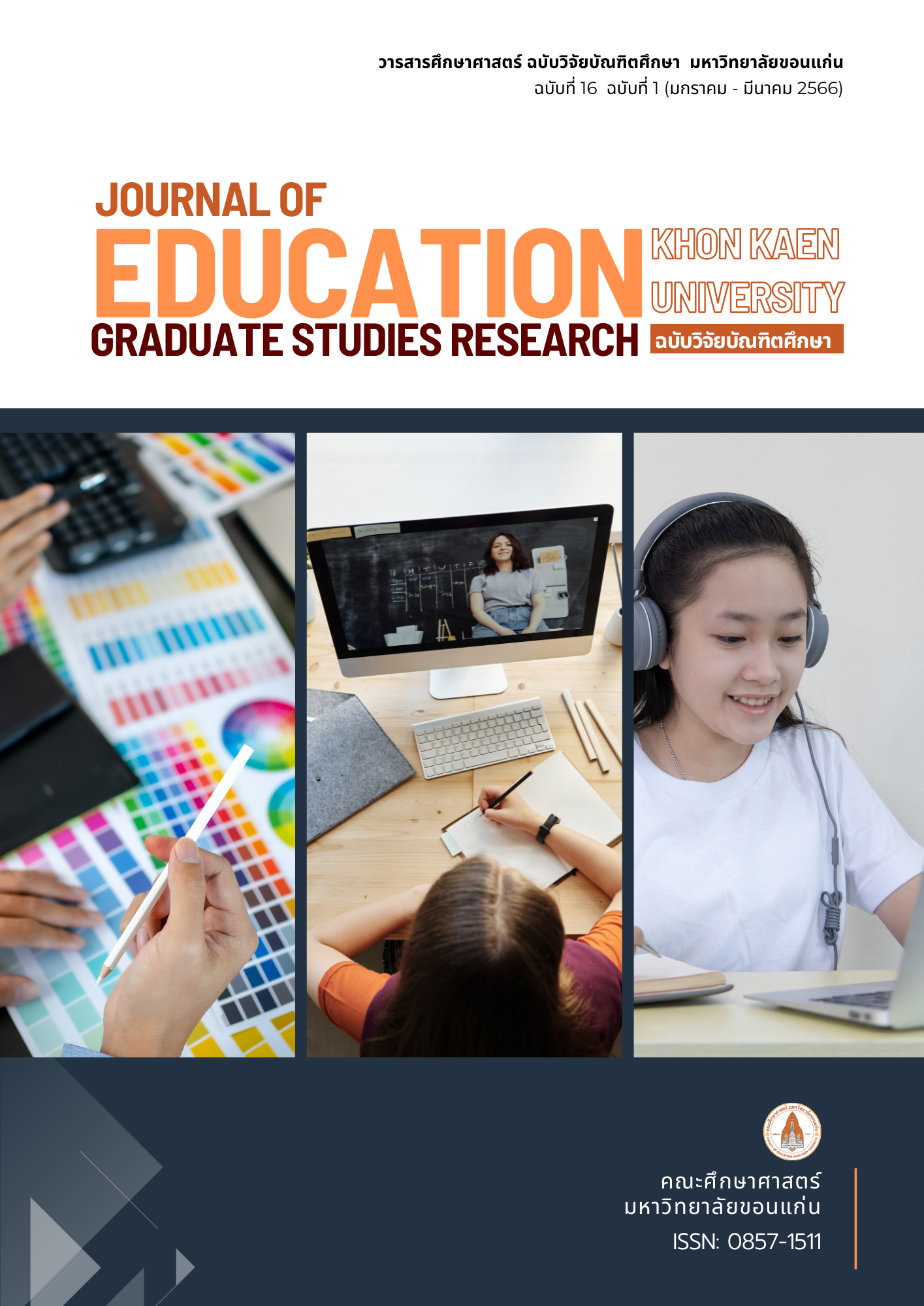ความเที่ยงของนวัตกรรมแบบวัดความจำระยะสั้น สำหรับเด็กปกติ
Main Article Content
บทคัดย่อ
การวิจัยในครั้งนี้มีวัตถุประสงค์เพื่อตรวจสอบความเที่ยงของนวัตกรรมแบบวัดความจำระยะสั้น สำหรับเด็กปกติ โดยใช้ระเบียบวิจัยเชิงสำรวจ มีกลุ่มเป้าหมายคือนักเรียน ในช่วงอายุ 13 – 15 ปี ที่มีสุขภาพปกติ จำนวน 30 คน ทำแบบทดสอบทั้งหมด 20 แบบทดสอบที่ผ่านการตรวจสอบความตรงเชิงเนื้อหาแล้ว และผู้วิจัยได้หาความเที่ยง ด้วยค่าสัมประสิทธิ์ความเที่ยงของคูเดอร์-ริชาร์ดสัน วิธี KR-20
ผลการวิจัยพบว่า (1) แบบวัดการได้ยินตัวเลข (2) แบบวัดการได้ยินตัวอักษร (3) แบบวัดการได้ยินคำ (4) แบบวัดการได้ยินคำไม่มีความหมาย (5) แบบวัดการทัศนวิสัย (6) แบบวัดแบบภาพบนตาราง (7) แบบวัดแบบภาพสี (8) แบบวัดแบบรูปทรง (9) แบบวัดการฟังเสียงประโยค (10) แบบวัดการอ่านประโยค (11) แบบวัดการฟังคำสุดท้ายของประโยค (12) แบบวัดการจำตัวอักษรเดี่ยวหลังการบวกลบเลข (13) แบบวัดลูกเต๋ากระพริบ (14) แบบวัดวงกลมสีแดง (15) แบบวัดการนับรูปสามเหลี่ยมแบบย้อนกลับ (16) แบบวัดการนับรูปปลาดาวแบบย้อนกลับ (17) แบบวัดการจำคำย้อนกลับ (18) แบบวัดการจำตัวเลข (19) แบบวัดการจำตัวเลขที่ดำเนินการทางคณิตศาสตร์ (20) แบบวัดความจำสีมีค่าสัมประสิทธิ์ความเที่ยง เท่ากับ 0.701 0.701 0.712 0.750 0.809 0.716 0.712 0.740 0.716 0.957 0.972 0.748 0.902 0.947 0.933 0.950 0.980 0.987 0.952 0.870 ตามลำดับ
เนื่องจากค่าสัมประสิทธิ์ความเที่ยงทุกแบบทดสอบนั้นมีค่ามากกว่า 0.700 โดยมีค่าสัมประสิทธิ์ความเที่ยง ตั้งแต่ 0.701 ถึง 0.987 ดังนั้นจึงสรุปว่าค่าความเที่ยงของแบบทดสอบทั้งหมดของนวัตกรรมแบบวัดความจำระยะสั้นสำหรับเด็กปติ อยู่ในเกณฑ์ที่เชื่อถือได้
Article Details

อนุญาตภายใต้เงื่อนไข Creative Commons Attribution-NonCommercial-NoDerivatives 4.0 International License.
เอกสารอ้างอิง
จตุภูมิ เขตจัตุรัส. (2560). วิธีการและเครื่องมือประเมินการเรียนรู้ของผู้เรียน. ขอนแก่น: มหาวิทยาลัยขอนแก่น.
ชินวัฒน์ ภาคสุโพธิ์. (2565). การพัฒนานวัตกรรมแบบวัดความจำระยะสั้น สำหรับเด็กปกติ. วิทยานิพน์ศึกษาศาสตรมหาบัณฑิต มหาวิทยาลัยขอนแก่น.
ทัศนีย์ บุญเติม, จตุภูมิ เขตจัตุรัส, จักรกฤษณ์ สําราญใจ, จุติมา เมทนีธร, จินตนาภรณ์ วัฒนธร, สุภาพร มัชฌิมะปุระ,
ปณคพร วรรณานนท์, สุวิทย์ อุปสัย, ศานิตย์ ศรีคุณ และศิริพร วีรชัยรัตนา. (2557). การพัฒนาเครื่องมือวัดทางพุทธิปัญญา (ฉบับภาษาไทย). กรุงเทพฯ: สํานักงานคณะกรรมการวิจัยแห่งชาติ.
บุญชัช เมฆแก้ว. (2562). การพัฒนาชุดช่วยวิเคราะห์ข้อมูลแบบเรียลไทม์หาค่าความเชื่อมั่นแบบทดสอบ (KR-20).
พังงา: วิทยาลัยชุมชนพังงา.
รัตนะ บัวสนธ์. (2540). การประเมินโครงการ การวิจัยเชิงประเมิน. กรุงเทพฯ: คอมแพคท์พริ้น จำกัด.
สุวิมล ติรกานนท์. (2546). การใช้สถิติในงานวิจัยทางสังคมศาสตร์: แนวทางสู่การปฏิบัติ. กรุงเทพฯ:
โรงพิมพ์จุฬาลงกรณ์มหาวิทยาลัย.
ศานิตย์ ศรีคุณ. (2562). การตรวจสอบความตรงเชิงทฤษฎีของซอฟต์แวร์แบบวัดความสามารถเชิงพุทธิปัญญาในมิติ
ความถูกต้อง. วารสารศึกษาศาสตร์ มหาวิทยาลัยขอนก่น, 42(4), 103-117.
ศานิตย์ ศรีคุณ. (2563). การตรวจสอบความตรงเชิงโครงสร้างของซอฟต์แวร์แบบวัดความสามารถเชิงพุทธิปัญญา ในมิติเวลาของนักเรียนระดับชั้นมัธยมศึกษาปีที่ 3. วารสารปัญญาภิวัฒน์, 12(3), 229 - 243.
ศานิตย์ ศรีคุณ และเกศราพรรณ พันธุ์ศรีเกตุ คงเจริญ. (2563). การศึกษาอิทธิพลของความจำขณะทำงานที่ส่งผลต่อผลสัมฤทธิ์ทางการเรียนคณิตศาสตร์. วารสารศิลปการจัดการ, 4(1), 140 - 151.
ศานิตย์ ศรีคุณ. (2564). การศึกษาอิทธิพลของความจำขณะทำงานที่ส่งผลต่อทักษะการแก้ปัญหาทางคณิตศาสตร์. วารสารศึกษาศาสตร์ มหาวิทยาลัยขอนแก่น, 44(1), 77 - 88.
Cronbach, L.J. (1951). Coefficient alpha and the internal structure of tests. Psychometrika, 16, 297 – 334. From: https://doi.org/10.1007/BF02310555
Ermie, E. (2017). Psychometrics 101: Know what your assessment data is telling you. Slides presented at the ExamSoft Assessment Conference 2017, Denver, Colorado.
Hoyt, C. (1941). Test reliability estimated by analysis of variance. Psychometrika, 6, 153-160.
Jeffry, R. (2004). Assessment of Critical Thinking. Scottsdale Community College. 5.
Klausmeier, H.J. (1985). Educational psychology. New York: Harper & Row. 5.
Kuder, G. & Richardson, M. (1937). The theory of estimation of test reliability. Psychometrika, 2,
– 160.
Piaget, J. (1983). Piaget’s Theory. Handbook of Child Psychology. New York: Wiley. 1(4), 41 - 102.
Sousa, D. (2006). How the Brain Learns 3rd Edition. CA: Corwin Press, Thousand Oaks.
Spapé, M., Verdonschot, R. G., & Steenbergen, V. H. (2014). The E-Primer: An Introduction to Creating Psychological Experiments in E-Prime. Netherlands: Leiden University Press.
Sweatt J. David. (2003). Mechanisms of Memory: Introduction the Basic of Psychological Learning and Memory Theory. United Kingdom: Elsevier.

